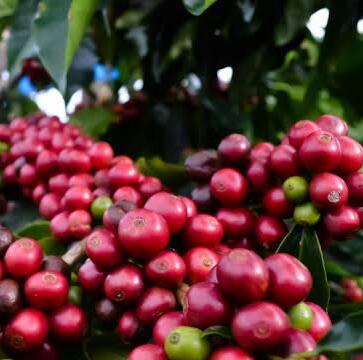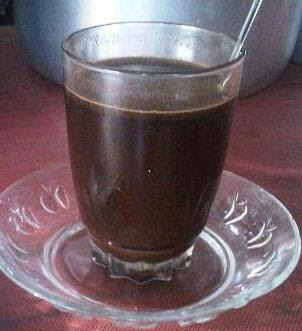Liberica Muria Coffee, The Scent Of Jackfruit Coffee
If you have facing coffee, different tastes, different ways of drinking, different social levels, different positions, different laughs, can unite and get along, can respect each other, no difference in status, not fighting each other when one table together face coffee.
Indonesia has many types of coffee spread throughout the archipelago. Enjoyment of coffee from Indonesia even already famous worldwide. Coffee has long been known to be consumed. The typical taste makes many people enjoy the steeping of coffee. Coffee is one of the world's most cultivated commodities in more than 50 countries.
One of Indonesia's famous coffee in addition to arabica coffee, robusta coffee is a coffee liberika, there is also a rainbow coffee. Liberica coffee is a type of coffee produced by Coffea liberica plant. This coffee is said to be derived from wild coffee plants in the region of Liberia. Though actually found also grow wild in other areas of Africa.
Liberica coffee was brought by the Dutch to Indonesia in the 19th century. This coffee was developed to replace the arabica plant which was attacked by leaf rust disease outbreak. But the effort was less successful because the liberal coffee plant experienced the same thing.
Currently, liberica coffee is grown on a limited basis in African and Asian countries. Globally production is far below arabica and robusta.
Varieties of liberal coffee are not many, popular ones such as Ardoniana and Duvrei.
In 2014, Indonesian Coffee and Cocoa Research Center (Puslit Koka) released a species of coffee liberika with the name of the variety "Libtukom" stands for Liberika Tunggal Komposit. Libtukom is the first liberal variety recommended in Indonesia. The libtukom variety is developed from the existing liberica coffee in Tanjung Jabung Barat, Jambi. This variety has the advantage of leaf rust resistance, can be planted in the lowlands and can be planted in marginal land such as peat soil.
Kudus sàat is known not only about kretek, soto Kudus, "wali songo" but also is famous for its coffee. In Kudus is known legendary Coffee Jetak, Coffee Colo, Kopi Ternadi, Robusta Muria Coffee, Arabica Coffee Muria, and also Liberica Coffee Muria. The people also love Ngopi, which is characterized by the development of coffee shop and cafe stalls along the street that started using local coffee beans instead of sauetan.
The paradigm that coffee is bitter and dark black will gradually change. People Will understand, that coffee has a genuine taste as the coffee plant grows. If the management is correct, it is not only bitter with dark black color but can bring out the sweet taste, spices, foliage, fruity and others according to the coffee tree grow and the surrounding environment such as shade trees, and plants aa beside it. Coffee will absorb any flavor and aroma that surrounds it.
Kudus has a vast coffee plantation scattered in some desa areas on the slopes of Mount Muria.
In Mount Muria located in Kudus there are some villages that inhabit the most people farm coffee. Production per year from below 0 mdpl to the top of the village with an altitude of about 1600 mdpl can result in total coffee beans up to 1500 tons during the harvest.
But there are many Kudus people who do not know the original coffee from their own ancestral lands. Coffee in Kudus has long been planted and has made part of the culture of society that the culture of coffee is very strong and ingrained. Coffee is not just a drink here but is a way of life. Coffee that is increasingly becoming an icon of the city of Kudus and getting stronger known in the community.
Coffee Kudus is 100% a delicious coffee experience and I would recommend it to everyone.
In addition to Robusta Muria coffee, Arabica Muria coffee, Muria coffee also has a Liberia Muria coffee.
Liberica Muria coffee has a different taste. There is a fruit jackfruit taste. The flavor is natural and not deliberately mixed with jackfruit extract when processing. Liberica Muria coffee is a prima donna for coffee lovers in neighboring country, but not so well known in the country.
Economically, farming Liberica Muria coffee is very profitable. Therefore, the harvest time is relatively fast. Liberica Muria Coffee is harvested twice a month. Throughout the year, Liberian Muria coffee continues to bear fruit with the track season only one to two months. Muria Liberica coffee production period is relatively the same as the palm, which can be picked fruit after two years of planting. The price is also not inferior to other types of coffee. If a good fruit season fits, in one hectare, can produce 1 Ton.
From the harvest, processed average with natural process. Kind of Liberika Muria coffee circulating better known by the community with the title of Java coffee and jackfruit coffee.
The scientific name for coffee liberica is Coffea liberica var. Liberica. At first this plant is classified into the same species as robusta coffee with the scientific name Coffea canephora var. liberica. But the newest groupings have it as a separate species called Coffea liberica. Because morphology and other properties are different from robusta. In addition to liberica coffee, there are other varieties in the species of Coffea liberica ie coffee excelsa with the scientific name Coffea liberica var. Dewevrei.
Liberica Muria coffee fruit has a size large enough. The shape is round to oval with a length of about 18-30 mm. In one fruit there are 2 coffee beans each of which has a length of about 7-15 mm. Among other types of coffee cultivation, coffee Liberika Muria has the largest fruit size.
Even though the fruit is large, the weight of the Muria Muria dry coffee fruit is only 10% of its wet weight. This nature is less preferred by farmers because of shrinkage of weight at harvest until the fruit is ready though high enough. So the cost of harvest becomes relatively more expensive. This situation that makes farmers reluctant to develop the type of copies of Liberika Muria.
Liberica Coffee Muria grows well in lowland tropical areas with an altitude of 400-600 meters above sea level. But still can grow and bear fruit to a height of 1200 meters. Ideal temperature growth is in the range 27-30 º C with rainfall 1500-2500 mm per year.
Liberica Muria coffee crops can grow well on full illuminated land or under other trees. Liberica Muria coffee also has a high tolerance on less fertile soil. This type of plant can grow on clay soil to sandy soil and resistant to drought or wet weather.
Liberik varieties libtukom have similarities with excelsa. But there are several characteristics that distinguish it, namely libtukom has a thick fruit flesh while excelsa thinner like arabica. In addition to the leaf pupus, libtukom green to brownish green while brownish red excelsa.
Liberian coffee Muria is not widely traded in the international market. Currently world coffee trade is dominated by arabica type about 70% and robusta 28%, the rest is kind of liberika and excelsa. In the region of Southeast Asia, liberica is much favored by consumers in Malaysia. Liberica Muria coffee from Indonesia is mostly exported to Malaysia, the rest are traded locally.
Make Liberia Muria Coffee as a tourism content in Kudus, as an effort to increase the economics of coffee activists, and the welfare of coffee farmers, invites people to love local coffee.
By branding good local coffee, the tourism sector of Kudus will be more vibrant, as more diverse types of tourist areas are developed and synergized, among others, with mountains, rice fields and forests.
We must uphold the progress of the Kudus Coffee or Muria coffee with its variant of Liberia Muria Coffee, Robusta Muria Coffee, and Arabica Muria Coffee by cultivating awareness, one of which is by intensifying the show of introduction of Coffee and improving the community coffee plantation. Let's drink coffee!



